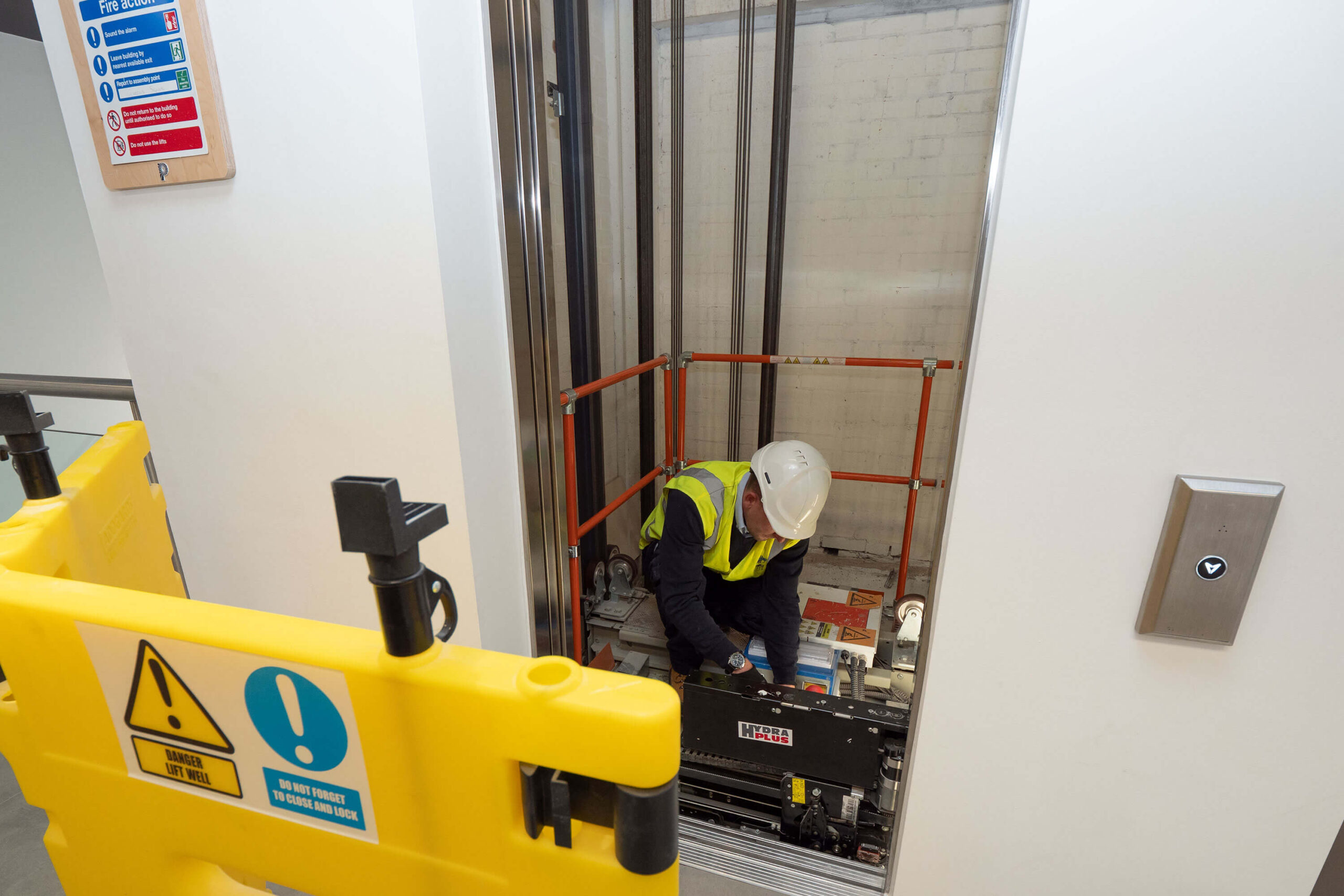An Extensive Strategy to Enhancing Efficiency Via Strategic Lift Fixing Techniques
In the world of center monitoring, the performance and reliability of lifts play a critical function in ensuring seamless operations. A tactical and organized method to raise fixing and maintenance is necessary to maximize performance and lessen downtime. By attending to common lift concerns, applying positive maintenance procedures, and creating targeted repair work plans, facilities can optimize their lift systems to operate at peak efficiency levels. The secret to accomplishing continual renovation exists in making use of data-driven insights to educate decision-making procedures and drive constant enhancement - platform lift dimensions. This thorough method to enhancing lift efficiency via calculated repair work strategies holds the pledge of not just improving functional performance but likewise extending the life expectancy of lift systems.
Relevance of Lift Performance Optimization
Comprehending the significance of maximizing lift efficiency is vital for making certain reliable and effective upright transportation systems in different structures and structures. Lifts are essential parts of modern framework, giving vertical mobility for residents and items within structures of differing elevations. By enhancing lift efficiency, structure owners and facility managers can boost customer experience, enhance energy effectiveness, and boost total operational efficiency.
Effective lift efficiency optimization entails different elements, consisting of rate, capacity, energy maintenance, consumption, and safety and security demands. Effectively optimized lifts can lower wait times for customers, especially in high-traffic buildings, bring about improved fulfillment and efficiency. Furthermore, optimized lifts add to energy cost savings by using innovative control systems and innovations that minimize power usage without jeopardizing performance.

Identifying Common Lift Issues
Determining usual lift problems is essential for maintaining the operational efficiency and safety of upright transportation systems in buildings. This problem can be a sign of problems with the lift's motor, control system, or even the alignment of the lift auto.
One more prevalent lift problem is unusual sounds rising from the lift shaft or machinery room. These sounds can vary from grinding or scratching noises to loud clunking noises, all of which may signal underlying mechanical issues that call for immediate attention. In addition, frequent door malfunctions, such as doors not opening or closing correctly, can disrupt the smooth flow of passengers and pose security dangers.
Executing Positive Maintenance Measures
To optimize the efficiency and long life of lift systems, positive upkeep measures play an essential function in making sure functional integrity and security. platform lift dimensions. Carrying out positive maintenance includes systematically examining, servicing, and fixing components prior to they stop working, hence avoiding expensive downtime and potential security hazards. Regularly arranged inspections can aid recognize small issues before they escalate into significant issues, ultimately expanding the lifespan of lift systems
One secret aspect of proactive maintenance is producing an in-depth maintenance schedule based upon manufacturer recommendations and market best practices. go to these guys This timetable ought to lay out tasks such as lubrication, alignment checks, and element substitutes at specified intervals. Additionally, carrying out condition surveillance methods, such as resonance analysis and thermal imaging, can assist detect early indications of wear or malfunction.
Moreover, training upkeep team on appropriate inspection methods and precautionary maintenance treatments is necessary for the effective execution of proactive upkeep steps. By fostering a society of proactive upkeep within a company, lift systems can operate at peak efficiency degrees, lessening disruptions and making certain the safety and security of customers.
Establishing Targeted Repair Strategies
Upon examining the upkeep documents and performance data, the engineering team can establish targeted fixing strategies to maximize and deal with details problems lift system performance. These fixing strategies are customized to the identified issues, making certain that resources are focused on fixing critical concerns efficiently. By focusing on repair services based on their effect on performance and safety and security, the targeted repair plans assist minimize downtime and maintenance prices while taking full advantage of the lift system's reliability.
Developing these strategies involves an extensive analysis of the lift system parts, including motors, wires, brakes, and control systems. Via this comprehensive analysis, the engineering team can determine the origin creates of any type of malfunctions or deterioration in efficiency. This information is then made use of to create a roadmap for the fixing procedure, describing the necessary actions, timeline, and resources needed to attend to each concern properly.
Additionally, targeted repair work plans might consist of preventative actions to improve the lift system's longevity and efficiency. By proactively addressing possible problems before they intensify, these strategies add to the overall effectiveness and security of the lift system.
Using Data-Driven Insights
Taking advantage of the power of data-driven understandings is critical in enhancing lift system efficiency and upkeep effectiveness. These predictive maintenance techniques aid prevent unexpected failures, reduce downtime, and a knockout post prolong the life-span of lift systems.

Conclusion
In final thought, optimizing lift efficiency is critical for making sure effectiveness and safety in buildings. By identifying common lift issues, executing aggressive upkeep actions, establishing targeted fixing strategies, and making use of data-driven insights, companies can improve efficiency and lessen downtime. It is essential to take a detailed strategy to lift repair work techniques to make best use of operational performance and make certain the long life of lift systems.
By attending to common lift issues, implementing aggressive upkeep steps, and establishing website here targeted fixing plans, facilities can maximize their lift systems to run at peak efficiency degrees.Another common lift concern is unusual sounds rising from the lift shaft or equipment area.Upon analyzing the maintenance records and performance information, the design team can develop targeted repair work plans to enhance and address details issues lift system capability. By focusing on repair work based on their impact on performance and safety and security, the targeted repair work plans aid lessen downtime and upkeep costs while maximizing the lift system's reliability.
It is essential to take a comprehensive approach to raise repair work techniques to take full advantage of operational performance and ensure the longevity of lift systems.